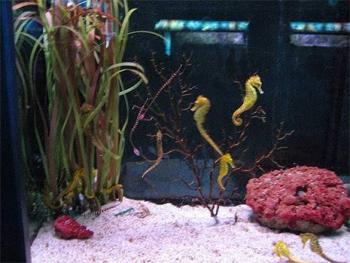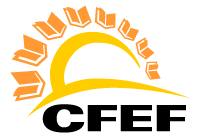
FIND IT FUND IT FLORIDA
Are Seahorse Babies Really Coming From Dad?

- School:
- University High School
- Subject:
- Science
- Teacher:
- Melanie Jenkins
- Rebecca Krueger
- Students Impacted:
- 350
- Grade:
- 11
- Date:
- August 3, 2023
0% Funded
Only $999.96 Needed
Goal
Seahorses have such an unusual appearance but their reproductive and feeding behaviors are even more unique. Students are fascinated with unique creatures of the ocean so breeding seahorses in captivity would be an opportunity to increase engagement and student achievement by developing measurement techniques, observation skills, while learning about anatomy, reproductive and feeding behaviors unique to seahorses and their importance to marine habitats. The saltwater tank with 2 breeding pairs will enable students to make scientific observations but will also require them to monitor the water quality and habitat for them to have a healthy environment.
What will be done with my students
SC.912.N.1.1 Define a problem based on a specific body of knowledge, for example: biology, chemistry, physics, and earth/space science, and do the following: Pose questions about the natural world, Conduct systematic observations, Write procedures that are clear and replicable. Identify observables and examine relationships between test (independent) variable and outcome (dependent) variable. Employ appropriate methods for accurate and consistent observations; conduct and record measurements at appropriate levels of precision. Plan investigations, Use tools to gather, analyze, and interpret data. Properly use instruments, equipment, and materials including set-up, calibration, technique, maintenance, and storage. Pose answers, explanations, or descriptions of events, Generate explanations that explicate or describe natural phenomena (inferences), Use appropriate evidence and reasoning to justify these explanations to others
SC.912.N.1.6 Describe how scientific inferences are drawn from scientific observations and provide examples from the content being studied.
SC.912.L.17.2 Explain the general distribution of life in aquatic systems as a function of chemistry, geography, light, depth, salinity, and temperature.
Marine Science students must also cite examples and explain the adaptations to the marine environment for the classes of Vertebrates such as Osteichthyes stated in standard SC. 912.L.15.13
Students will breed sea horses and observe their feeding, reproduction, role in energy transfer within food chains and examine their anatomy, classification, and importance in a marine ecosystem. Discussions and data collection on sea horse development, mating courtship behaviors, parental care, and feeding habits will take place on a weekly basis to improve measurement skills, use of test kits and other scientific equipment, problem solving, and communication skills. Students also learn to work together, keep records and interact socially.
Benefits to my students
Seahorses reproduce in an unusual way. The male seahorse becomes pregnant instead of the female. Bringing part of the ocean into your classroom is a rewarding experience and seahorses can be wonderfully interactive and exciting to watch and learn about. Seahorses have a unique digestive tract that lacks a stomach to store food as it digests. Because the food you feed your seahorse goes straight from the mouth to the intestines, it is essential to feed this small animal multiple times a days so more students and multiple class periods have more hands on involvement in the feeding and maintenance and care of the seahorses. Students will have the opportunity to observe sea horses up close and in-person, and as they care for these creatures throughout the year they will grow a fondness and appreciation for the uniqueness and want to protect the oceans to ensure their survival in the wild.
Budget Narrative
Seahorses are vertical swimmers so they need a tank that is taller than wide and this BioCube aquarium is the perfect size to breed and observe seahorses. To keep the aquarium running and sustain the life in the tank I will need to take care of both the abiotic and biotic factors within the tank. These are all necessary items for keeping the pH, Ammonia, Salinity, Nitrates, and Nitrite all at a level that is safe for the life of the seahorses.
Items
| # | Item | Cost |
|---|---|---|
| 1 | Coralife Size 16 BioCube Aquarium Deluxe Reef Bundle | $680.99 |
| 2 | CaribSea Arag-Alive 20 lb Fiji Pink Sand | $25.00 |
| 3 | Sea horses 2 breeding pairs | $200.00 |
| 4 | Frozen Mysis Shrimp to feed seahorses | $38.97 |
| 5 | Hitching post for sea horses | $26.00 |
| 6 | Macroalgae | $29.00 |
| Total: | $999.96 |
0% Funded
Only $999.96 Needed





Share
Please share this page to help in fulfilling this grant.
Email to a Friend